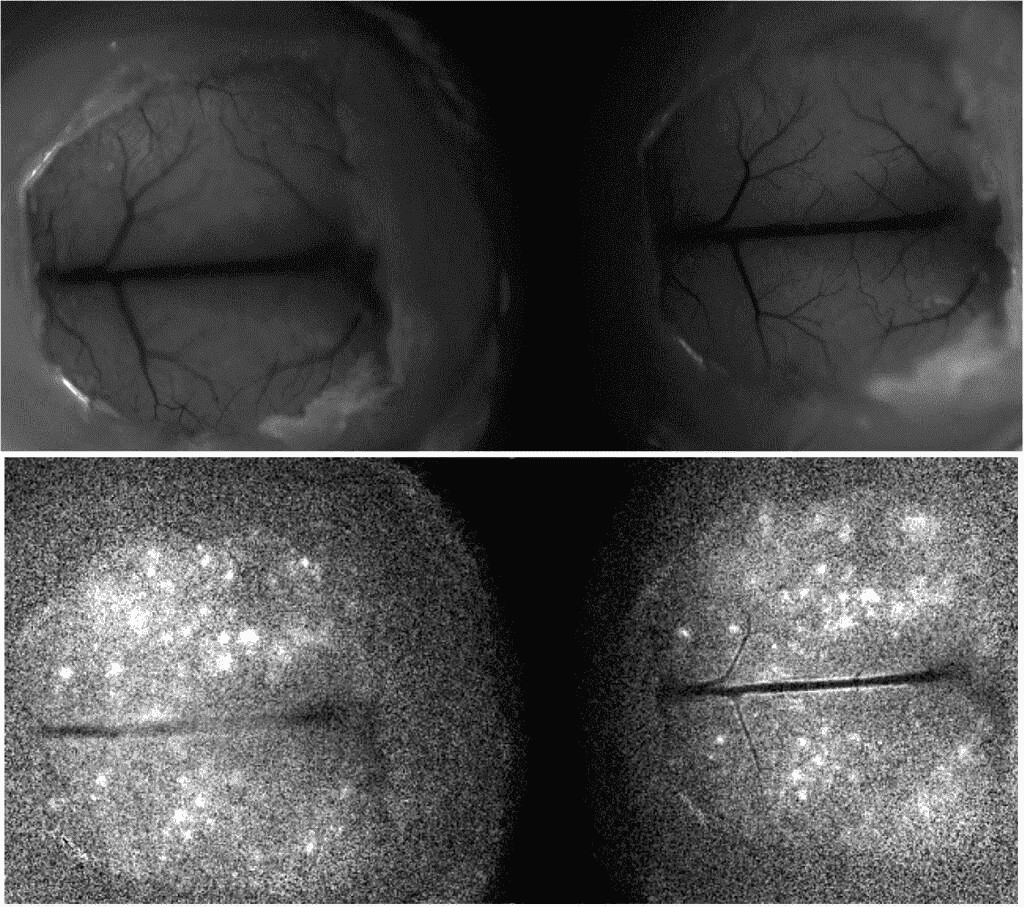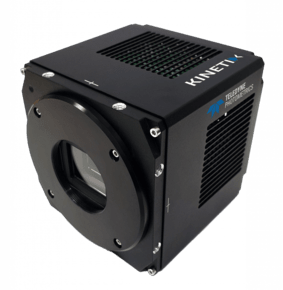High-Speed Optogenetics
Dr. Issac Kauvar, John Kochalka
Wu Tsai Neurosciences Institute, Stanford University, CA, USA
Background
Dr. Isaac Kauvar is a neuroscientist and engineer, developing tools in order to discover how cortex-spanning neuronal populations support the deployment of internal models during goal-directed behavior.
In order to track and analyze these large-scale activity patterns in the cortex, Dr. Kauvar and graduate student John Kochalka use conventional widefield imaging as well as advanced fluorescent imaging known as 'cortical observation by synchronous multifocal optical sampling' (COSMOS) in order to image widespread activity via a transparent window into a mouse brain.
Dr. Kauvar and the team found the need to build a new imaging system for COSMOS due to user demand.

within the tissue, and the bottom image is a still from a video, imaging functional neural activity at high-speed using the COSMOS technique.
Challenge
In order to measure activity across a dense neuronal sample, both a large field of view and high resolution is needed. Imaging across a tissue while trying to identify individual cells requires a large sensor size in order to image efficiently without excessive stitching/ population tiling, and a small pixel size in order to achieve sub-cellular resolution and pick out which cells are active at what time, across the tissue.
The neuronal activity also occurs on a very short timescale and requires fast detectors, whether using optogenetics or calcium/voltage imaging. This means that a suitable detector also needs to operate at a high speed while still retaining the large field of view.
In order to achieve these high speeds and still suitably detect signal, a highly sensitive detector is needed, especially in order to detect weak signals when imaging at high speeds and having a low exposure time.
We are enjoying the improvements in resolution, field of view and speed with the Kinetix, compared to other sCMOS cameras.
Dr. Issac Kauvar, John Kochalka
Solution
The Kinetix sCMOS camera is an ideal solution for both structural and functional neuroscience imaging, featuring a very large imaging area that can acquire high-resolution images at a very high speed. The extremely high speeds across a 10-megapixel sensor, combined with the near-perfect 95% quantum efficiency allow for very high speed and high sensitivity imaging, all with sub-cellular resolution at even low magnifications due to the small pixel size.
John Kochalka told us about his experience with the Kinetix, "Quantitatively we are enjoying the improvements in resolution, the field of view, and speed compared to other sCMOS cameras."
"The Kinetix seems like it will give us a lot of options down the road, such as voltage imaging, and will let us push the temporal resolution on all the work we're doing."

Learn More About The Kinetix
Download This Customer Story